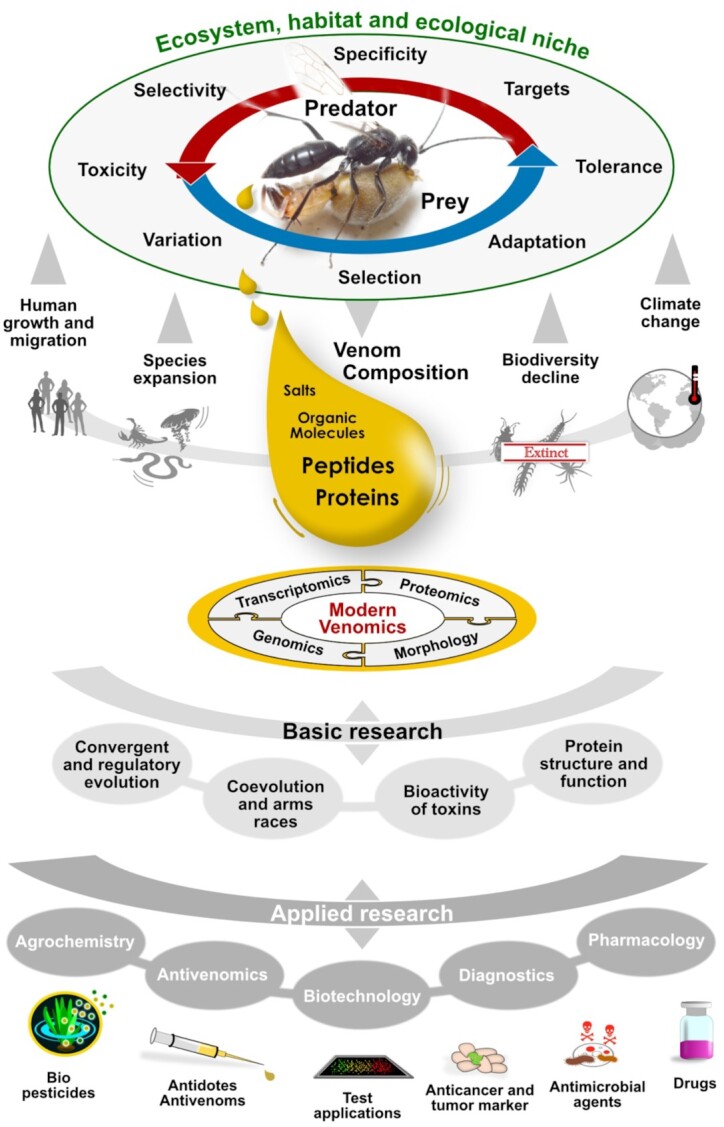Figure 1:

The importance and impact of venom. The biology and ecology of venomous species prompt diversity of venoms, which are constituted of highly specific toxin components that were adaptively produced over time. Predator-prey interactions are major evolutionary forces that often trigger arms races of venom toxicity and resistance. Extrinsic factors that affect venomous species and their interaction with humans include species expansion or decline (linked to the biodiversity crisis and climate change) but also the increasing human growth and migration. Basic venom research investigates why and how venoms and toxin genes evolve based on modern “omics” methods. Translational research exploits these basic studies for developing various applications, ranging from pharmacology (e.g., anti-pain and anti-cancer drugs, diagnostic markers, antivenom development) to agrochemistry (pesticides, antiparasitic compounds for crop and livestock protection) and biotechnology (e.g., nanopore sensing).
